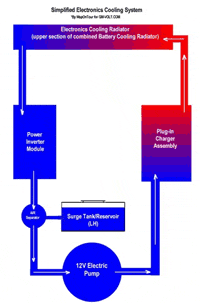
The power electronics cooling system also uses an air separator device to prevent air-bubbles from affecting cooling performance and utilizes a surge tank that acts as a coolant reservoir, and facilitates the routine addition of coolant via a pressure cap.






